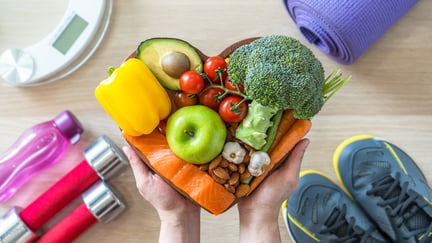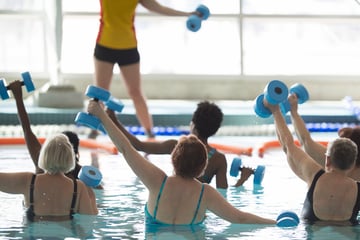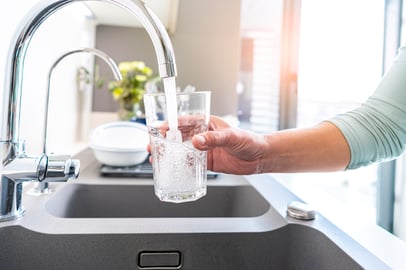 Fueling your body before and after exercise is essential for ensuring you will have enough energy to both perform and recover. However, it is important to choose the right foods, and to consume them at the appropriate time, to optimize your nutrition. What and when you eat varies depending on the individual and their preferences, the type of activity being performed, and whether the food is being consumed before or after physical activity.
Fueling your body before and after exercise is essential for ensuring you will have enough energy to both perform and recover. However, it is important to choose the right foods, and to consume them at the appropriate time, to optimize your nutrition. What and when you eat varies depending on the individual and their preferences, the type of activity being performed, and whether the food is being consumed before or after physical activity.
Pre-Exercise Nutrition
Ideally, you should aim to eat within 1 to 3 hours of exercise. When you should eat will
depend on the amount of food that is to be consumed. Allow 3-4 hours for a large meal (400 calories or more), about 2-3 hours for a smaller meal (200-300 calories), and one to two hours for a snack (100-200 calories) to digest. Eating too close to physical activity may result in gastrointestinal discomfort or impaired performance. Everyone’s body is different, so try
experimenting to see what time frame is best for yours. Similarly, consume familiar foods that you know will not cause stomach discomfort during activity (common culprits include
fried/greasy foods and high fat/very high fiber foods).
Good pre-exercise snacks/meals include:
● Cereal with fat-free milk and a piece of fruit
● Whole grain toast with mashed avocado or peanut butter
● A fried or scrambled egg with whole grain toast
● Low-fat cottage cheese or yogurt with fruit
● A fruit smoothie
Post-Exercise Nutrition
Typically, it is best to eat within 1 hour of an intense workout. If you’re unable to tolerate
a large meal after exercise, a small snack or meal (100-300 calories) should suffice until you’re able to stomach something more significant. Despite being finished with your activity or exercise, it is still necessary to replenish your energy stores by consuming carbohydrates and/or fats with your post-workout meal. Additionally, obtaining enough protein is important for muscle recovery and repair.
Good post-exercise snacks/meals include:
● A protein shake or smoothie
● Chicken, tuna or turkey on whole grain bread/toast
● Low-fat cottage cheese or yogurt with fruit
● Low-fat chocolate milk
● Hard-boiled egg and string cheese
Don’t forget to hydrate! Consuming a large amount of fluid prior to exercise is likely to cause an upset stomach, so try to stay hydrated throughout the day before and after exercising, and keep a water bottle with you during activity when possible! A general rule of thumb is to drink at least 8 ounces of water for every 10-20 minutes of exercise you complete.


 Exercising in the pool is great way to get in a workout! The water helps support you and allows you to challenge yourself! You can safely push the limits of your balance or get a thorough strength workout without putting too much stress on your joints compared to working out on land. Have you ever considered taking your flexibility workout into the pool? Increasing the range of motion within your joints and developing flexibility in major muscle and tendon groups can keep you mobile, promote better posture, and help prevent injuries. All these combine to reduce stress on your body!
Exercising in the pool is great way to get in a workout! The water helps support you and allows you to challenge yourself! You can safely push the limits of your balance or get a thorough strength workout without putting too much stress on your joints compared to working out on land. Have you ever considered taking your flexibility workout into the pool? Increasing the range of motion within your joints and developing flexibility in major muscle and tendon groups can keep you mobile, promote better posture, and help prevent injuries. All these combine to reduce stress on your body! We all know it’s essential to stay hydrated in the summer and that the best way to do so is by drinking plenty of water. But is there a certain type of water, such as “alkaline” water, that offers better hydration? Here’s what our RD has to say.
We all know it’s essential to stay hydrated in the summer and that the best way to do so is by drinking plenty of water. But is there a certain type of water, such as “alkaline” water, that offers better hydration? Here’s what our RD has to say.